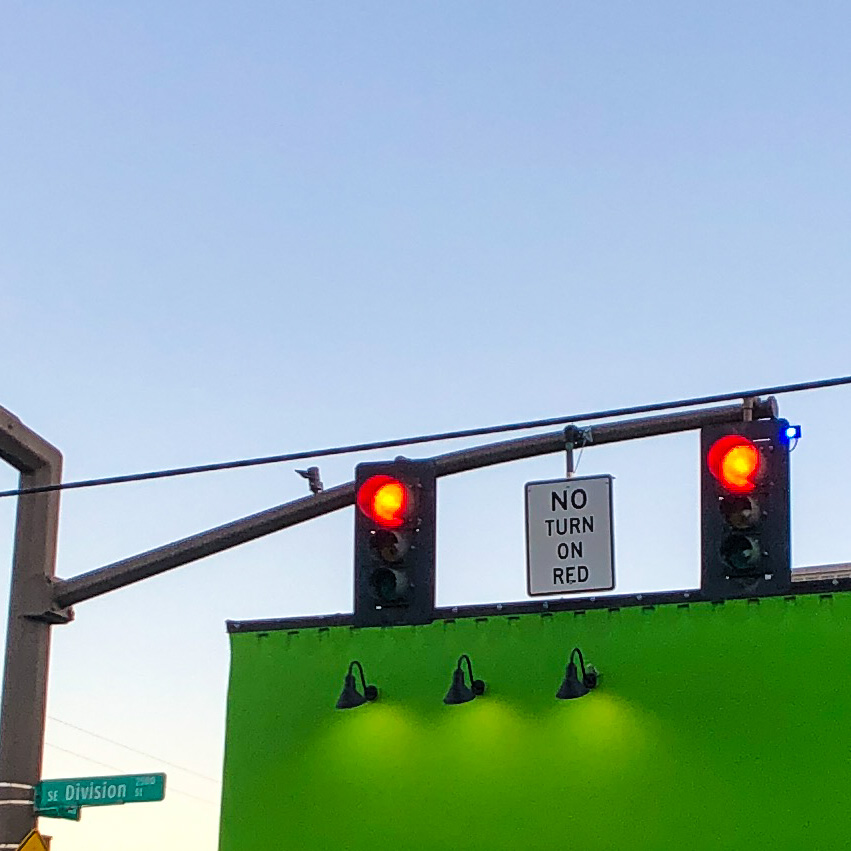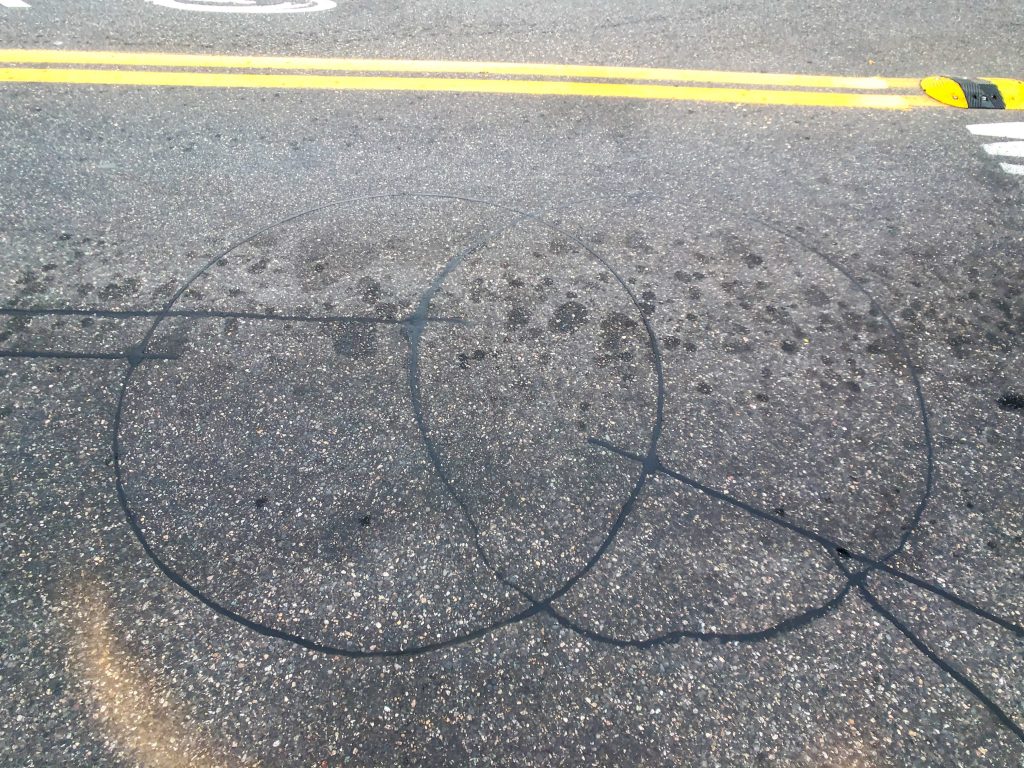Have you ever been at an intersection on your bike as the traffic light cycles through without a green for you and wondered why or how you hadn’t been noticed? Did you have to make the decision to run the red after a few cycles? It can happen and for bicyclists it can be a source of aggravation and anxiety.

The traffic lights at many busy intersections are coordinated by underground magnetic signal-detection loops which use electromagnetism to identify when vehicles are directly above. Bikes, motorcycles, and even small cars may sometimes not set off the detector though it is not, as some will argue, about the weight of the vehicle overhead. It’s all about placement of metal in line with the induction loops to trigger the light response and get the green. But even if you’ve been “seen” by the signal-detection loop how can you know that you’ll be getting the green? In Portland, we call it the Blue Light Special, (ed. – OK, that’s just something I made up for this feature.)
Situated next to the traffic light at numerous Portland intersections you’ll find a small, round blue light that illuminates when detecting a bicycle stopped at the intersection. This blue LED light is connected to the detection loop and shines to inform riders that a green light will be included in the upcoming cycle for them to proceed.

What began as an experimental project with one intersection in 2012 has grown to an increasing number of locations throughout the city and has proven successful. Where a painted marker on the street requires continuous re-painting due to wear, these simple lights are very low cost and have proven to be more durable and more reliable for riders. In some case, such as the photos here from the intersection of SE Division St & SE 21st Ave, there are both indicator markers and lights.
We reached out to our friends at the Portland Bureau of Transportation, (PBOT), to learn a little bit more about these helpful blue lights.
What is the official name for these devices?
Detection Confirmation Indications
How many are in place throughout Portland?
Over 20 have been placed around the city. A good one that comes to mind is at SW Terwilliger and Capitol Highway. PBOT crews just refreshed all the street stripes and markings as part of their regular maintenance schedule, so it’s quite photogenic.
Are there more planned?
Yes, but we’re thinking that the Dutch style countdown (white LEDs on a separate signal head) will be more clear. This new style device is also considered experimental by the Federal Highway Administration (FHWA), so we will have to ask for permission. We are currently working on a research study of these types of signals with Portland State and Oregon State universities. (You’ll find the first Dutch-style bike signal in the U.S. at N Broadway and Williams).
For more about these new Dutch style countdown signals, check out this recent story on Bike Portland.
Have they been successful?
We believe so, we continue to get requests and anecdotal observations.
One of the benefits is that these help our maintenance staff and engineers know if the detection is working. Previously, we would have one electrician take a bike to the signal and another electrician at the signal cabinet would have to confirm that the equipment was fine tuned to detect a bike. Now, we can reduce the need to have two people do that task. Our engineers can also tell that the detection is working and, as regular cyclists, that’s great for assuring the long-term success of traffic detection for people riding in Portland. Ideally, it will reduce the need to put the marking on the pavement. Instead of the marking, you would just look for the blue light or the Dutch-style countdown marking.

Where did the idea for this come from?
PBOT staff traveled to the Netherlands and observed the Dutch style countdown as part of their trips. Later, after seeing that Austin, Texas, had implemented a blue light signal, our staff reached out to the Austin team and began implementing our own signals in Portland as well.
Thanks to Hannah Schafer and Peter Koonce of PBOT for their time and enthusiasm in assisting with this story. As regular cyclists themselves we know they are always thinking of ways to improve getting around town by bike. Thank you!
Pro Tip – Place your bike in-line with a section of a signal detection loop at an intersection for greater detection. For non-ferrous bikes you may want to lean your bike over the loop to give the steel components of your drivetrain a larger profile to be detected.

Give PBOT’s official Instagram account a follow to stay up-to-date on transportation news. Here’s that new Dutch-style signal over by the Moda Center:
If I am stopped at a light that I know is not set properly no matter how much I have notified the traffic engineer and the car behind me has not pulled forward far enough to activated the magnetic detector, I will pull further into the intersection and motion for the car behind me to roll forward, hoping that he isn’t an idiot and will do so slowly. When he is over the detector, I motion to him to stop. This helps both of us as otherwise we will sit there until I get off my my bike and go over to the sidewalk and hit the pedestrian button. A major pain and unnecessary. It would be oh so helpful of the traffic division checked the magnetic detectors periodically to insure that they are working the way uniform traffic regulations require them to work